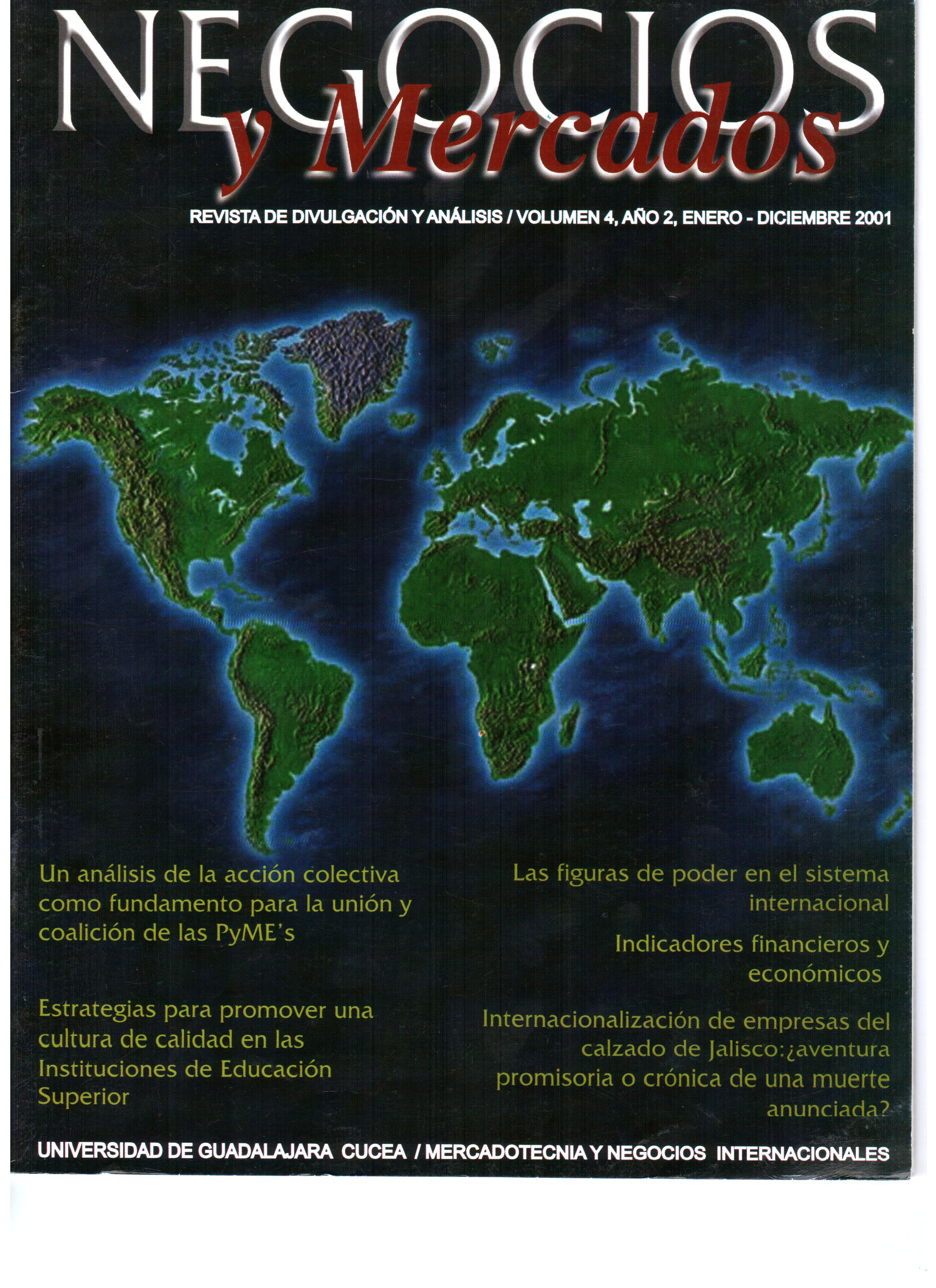Un análisis de la acción colectiva como fundamento para la unión y coalición de las pymes
DOI:
https://doi.org/10.32870/myn.v0i4.4926Resumen
Este artículo comienza con un estudio de comportamiento y el desarrollo de las coaliciones en diferentes contextos (político, económico y de interés común), evaluando las condiciones y variables de la acción colectiva o de grupos, en un entorno de coordinación; vinculándolas además con las condiciones y los problemas a que se enfrentan estas.Citas
Anderson, R. N., D’Amicantonio, J., & DuBois, H. (1992). Labor unions or professional organizations? Which have our first loyalty. College &Research Libraries, 53(4), 331-340.
Carroll, J. D., Gaasch, W. H., & McAdam, K. P. (1982). Amyloid cardiomyopathy: characterization by a distinctive voltage/mass relation. The American journal of cardiology, 49(1), 9-13.
Dahrendorf, R. (1959). Class and class conflict in industrial society. Stanford University Press.
Galaskiewicz, J. (1985). Professional networks and the institutionalization of a single mind set. American sociological review, 639-658.
Hardin, R. (1971). Collective action as an agreeable n‐prisoners' dilemma. Behavioral Science, 16(5), 472-481.
Haug, M. R., & Sussman, M. B. (1971). Professionalization and Unionism: A Jurisdictional Dispute?. American Behavioral Scientist, 14(4), 525-540.
Hovekamp, T. M. (1994). Organizational commitment of professional employees in union and nonunion research libraries. College and Research Libraries, 55(4), 297-308.
Lijphart, A. L. (1999). Patterns of democracy: government forms and performance in thirty-six countries (No. 321.7). Yale University Press,.
Marwell, G., & Oliver, P. (1993). The critical mass in collective action. Cambridge University Press.
McCarthy, J. D., & Zald, M. N. (1973). The Trends of Social Movements in America, Morristown.
Mills, C. W. (1951). White collar: The American middle classes (Vol. 3). Oxford University Press on Demand.
Mancur, O. L. S. O. N. (1965). The logic of collective action. Public goods and the theory of groups.
Oliver, P. E. (1993). Formal models of collective action. Annual Review of Sociology, 271-300.
Parsons, T. (1969). Politics and social structure. Free Press.
Schelling, T. C. (1973). Hockey helmets, concealed weapons, and daylight saving: A study of binary choices with externalities. The Journal of Conflict Resolution, 17(3), 381-428.
Sherif, M. (1969). CU Sherif Social Psychology. New York.
Simmel, G. (1955). Conflict and The web of group-affiliations.
Van Maanen, J., & Barley, S. R. (1984). Occupational communities: Culture and control in organizations. Research in Organizational Behavior.
Descargas
Publicado
Cómo citar
Número
Sección
Licencia
Mercados y Negocios por Departamento Mercadotecnia y Negocios Internacionales. Universidad de Guadalajara se distribuye bajo una Licencia Creative Commons Atribución-NoComercial 4.0 Internacional.
Basada en una obra en http://revistascientificas.udg.mx/index.php/MYN/.
Los autores conservan los derechos de autor.








